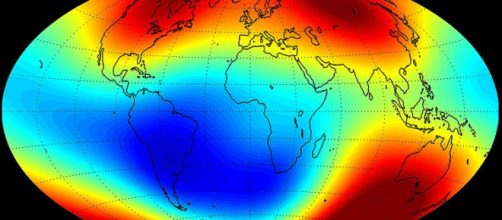The Earth's field might be losing strength
Based on recent studies conducted on the earth´s magnetic field, it has been found that it may be losing strength. This was discovered by; ¨ Swarm¨ a group of satellites form the European Space Agency. At present, the magnetic field shows a decrement in intensity of 10-15% during the last 150 years and this weakness has decreased more in some regions that on others during the recent 20 years.
Historically, the earth´s magnetic field is known to experience reversals over long periods of time, with the most recent (Brunshes Matuyama reversal) occurring over 70,000 years ago.
The reversals most likely occur randomly over periods of time ranging from 100,000 years to 50 million years; however, reversals have occurred more frequently in recent periods of time.
Earth’s protective bubble
The earth's magnetic field is an invisible shield of magnetic field lines that protect the earth from the solar wind and cosmic rays. It´s generated by convective currents of molten iron at the core, powering strong electrical currents that extend for thousands of kilometers into space.
The convective currents in the interior of the earth create the lines that point to the poles on the surface of the earth. The earth´s North Pole shows to have been moved from its present location, northern Canada, to Siberia at the rate speed of 10 km (6 miles) per year at the beginning of the past century, and from 2000 to the present the rate has incremented.
Swarm satellite
Launched by the European Space Agency in 2003, Swarm, a group of three satellites is measuring the magnetic fields originating at the earth´s core, its crust, ionosphere and magnetosphere. The measurements from the satellites indicate the regions on which the magnetic field is declining or augmenting. It also has provided information on the periods of time at which these variations are occurring.
The findings show that the magnetic field has experienced fluctuations in between the years of 1999-2016. In a visual chart of the earth, the colors shown represent the weak and the strong regions of magnetization, with the blue showing the weakest and the red showing the stronger areas.
The region where the magnetic field has weaken more, ¨the South Atlantic anomaly¨ is shown as a big blue spot west of south Africa.
It´s believed that the fluctuations of molten iron in the earth´s interior could be producing the changes in the magnetic field. Further studies are expected to provide information on the processes occurring in the earth´s core, as well as the ones occurring in the magnetosphere due to solar activity.

